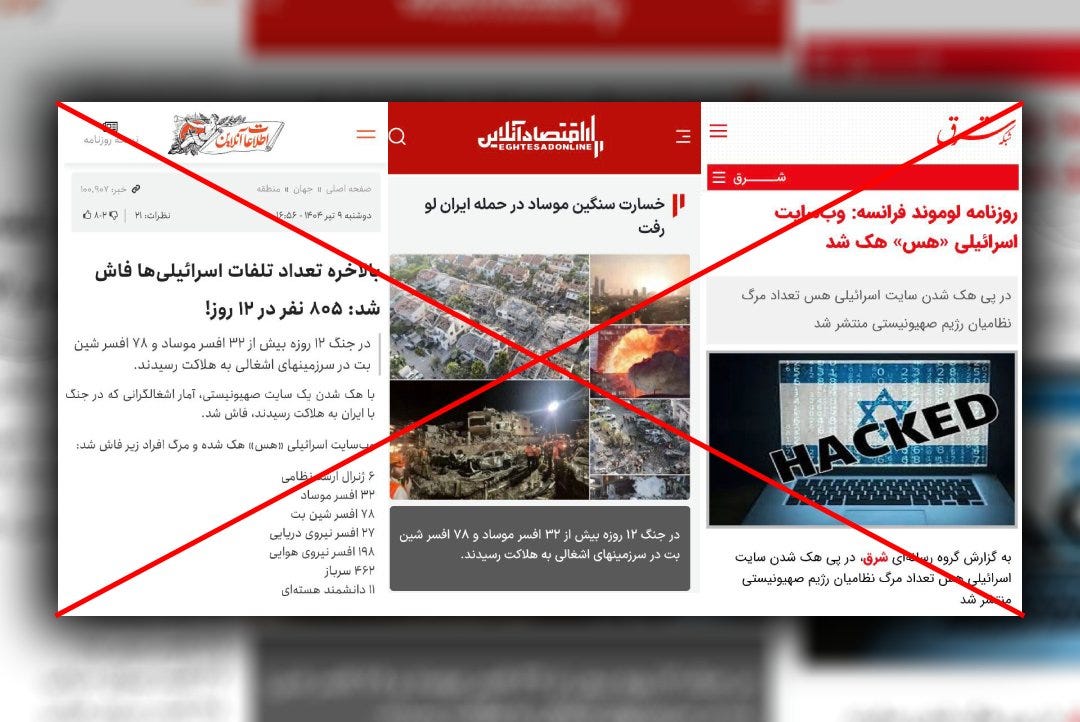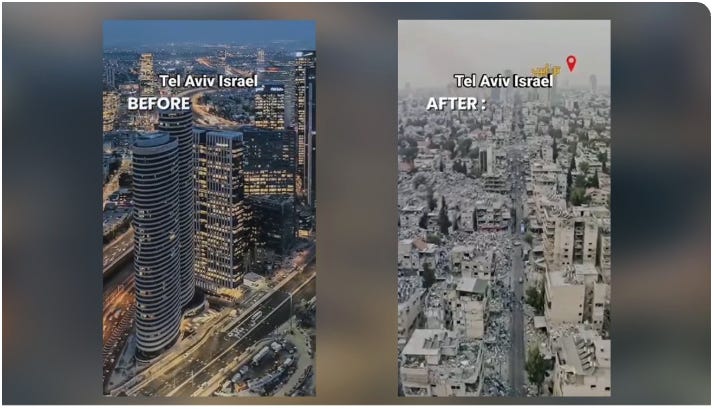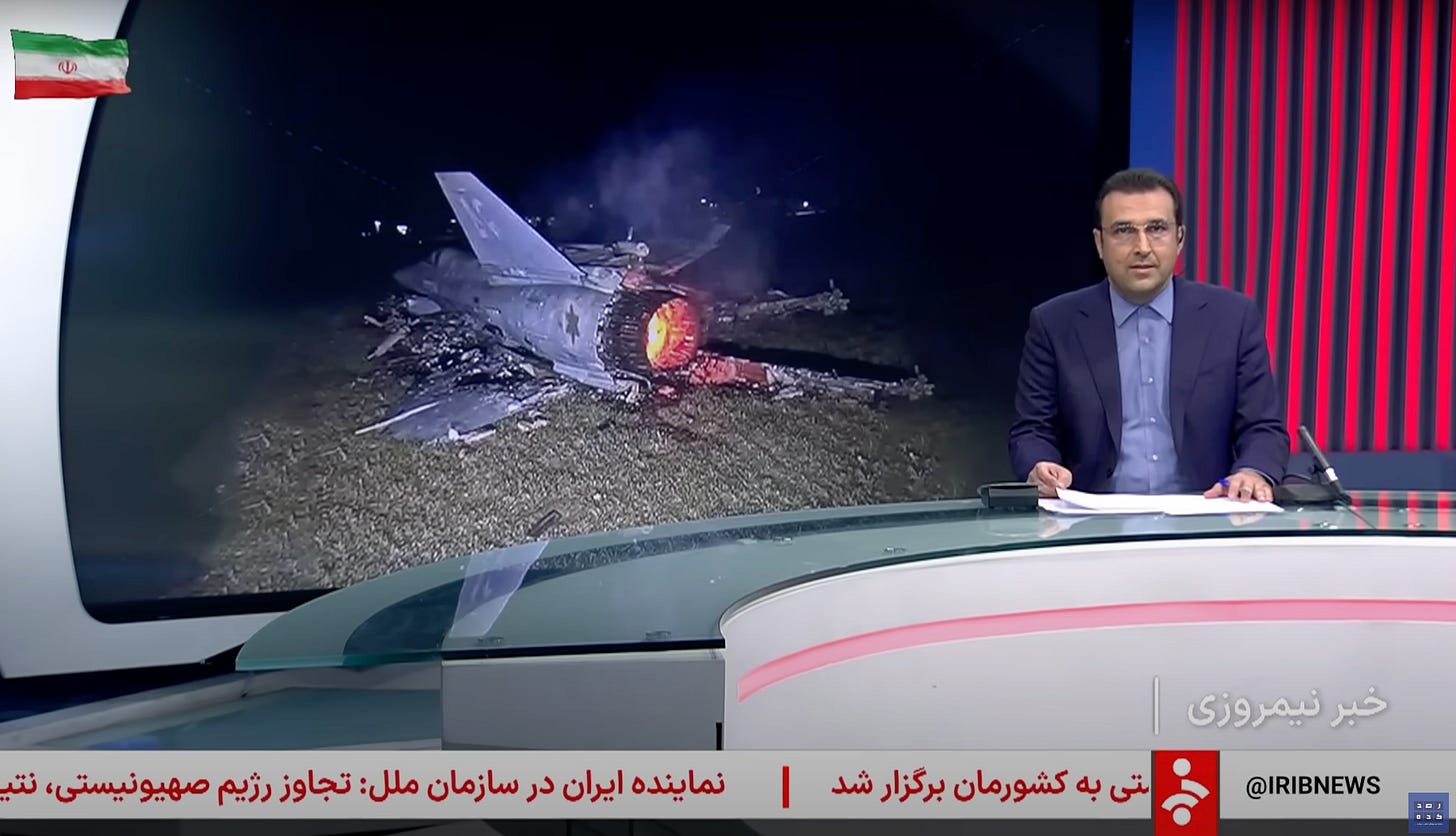The 12-Day Conflict: An Analysis of Iran's Disinformation Landscape
While missiles flew in the skies between Iran and Israel during the 12-day war, another equally potent weapon was being deployed: information, or rather, disinformation.
In a coordinated, multi-layered media campaign, an ecosystem of Iranian news outlets and social media channels pushed a barrage of false or misleading stories. These weren’t random hoaxes or grassroots conspiracies. They followed patterns of timing, messaging, and amplification that point to a centralized command center for information warfare inside Iran.
At Factnameh, our analysis of dozens of viral claims reveals how Iran’s state and semi-state media machine, sometimes backed by bots and foreign actors, worked to shape public perception of the war, distort reality, and advance a narrative of dominance and control. This blog unpacks the anatomy of such a campaign.
A New Level of Coordination
While disinformation is not new to the Islamic Republic, similar tactics were deployed during the COVID-19 pandemic, the Ain al-Assad missile strike, and the Zhina (Mahsa) Amini protests in 2022. What unfolded during the recent Iran-Israel conflict was broader, more systematic, and in some cases, more technologically sophisticated.
One clear pattern: nearly identical false news stories were published simultaneously across diverse platforms, including:
State-run broadcasters and hardline outlets like IRIB and Kayhan
Semi-official news agencies such as Mashregh News, Raja News, and Qatreh
“Revolutionary” social media accounts aligned with security and paramilitary forces
Seemingly professional wire services, like IRNA and ISNA
Even relatively moderate or “reformist”-leaning newspapers, such as Shargh and Ham-Mihan
This five-tiered ecosystem functioned as an echo chamber. Stories spread rapidly and with high visibility, creating the illusion of independent verification.
Example #1: The “Le Monde Leak”
A viral news item claimed that the French newspaper Le Monde reported a hack into an Israeli website had revealed the “real” (and much higher) Israeli casualty number from the war. The article was completely fabricated, but that didn’t stop it from being published by a wide spectrum of Iranian media, including Shargh, Ettelaat, Eghtesad News, Mashregh, and dozens of others.
Example #2: AI-Generated Tel Aviv “Aftermath”
A fake video purporting to show Tel Aviv before and after Iranian missile strikes circulated widely. Created using AI, it showed extensive destruction in central Tel Aviv, damage that never occurred. Once again, the clip was published simultaneously across both state-run media and “reformist” outlets’ social channels.
These aren’t isolated cases. They illustrate key strategic goals of the campaign:
Exaggerate Iran’s military success and project an image of strength.
Distract from domestic losses and damage.
Flood the information space to make verification harder and mislead the public.
In both cases, we can trace common patterns that appear across other similar fake stories. Two of the most notable patterns include:
The goal is to exaggerate the impact of Iran’s missile strikes on Israel and promote the idea that the damage and casualties were far greater than what occurred.
In both cases, the stories were released simultaneously across different platforms, using the same text and images. Although the exact order of publication is unclear, the simultaneous appearance of these fake stories across such a diverse media landscape strongly suggests a coordinated effort to produce and distribute disinformation.
The exact workings of this coordinated mechanism remain unclear, but available evidence suggests that from the outset, government institutions have attempted to exert pressure on media outlets and content producers. On June 12, Iran’s Attorney General issued a warning to the media to “refrain from addressing topics that disturb the public’s psychological security.” Soon after, on June 22, the Entekhab news website was blocked, allegedly due to its “failure to comply with repeated warnings not to publish content that threatens the psychological security of the public.” Authorities never clarified which specific reports triggered the ban or how the outlet had violated this vague directive. However, given the track record of media control in Iran, it is not unlikely that Entekhab was shut down for refusing to publish what it was asked to.
We have seen similar top-down narrative control in the past during the downing of Ukraine International Airlines Flight PS752 in January 2020, journalists in Iran were ordered to stick to official lines until the government could craft its narrative.
In the lead-up to the war, a leaked memo from the Supreme National Security Council had instructed media outlets to frame Iran’s nuclear policy in positive terms, especially after the IAEA Board of Governors issued a resolution criticizing Tehran.
All of these track records reflect a recurring strategy in which media outlets are co-opted or coerced into echoing the state’s narrative, especially in times of crisis. Instead of cutting off the flow of information, authorities opted for channelling it using internal platforms like state TV, and domestic messaging apps like Eitaa and Baleh, to saturate the media environment with approved content.
The F-35 Fantasy
One of the most persistent disinformation campaigns during the Iran-Israel war revolved around claims that Israeli F-35 fighter jets had been shot down by Iranian air defences. This narrative, pushed aggressively across social media and amplified by state-affiliated outlets like IRIB and Fars News Agency, relied on a series of fabricated reports and doctored images. The goal was clear: to portray Iran as having succeeded in taking down one of the world’s most advanced stealth aircraft, an extraordinary military achievement if it were true.
These false claims escalated to the point where reports even suggested that Lockheed Martin, the manufacturer of the F-35, saw a drop in stock value as a result of the alleged incident. In reality, no F-35s were downed in Iran, no Israeli pilot was captured, and Lockheed Martin’s stock fluctuations were unrelated to the conflict. Factnameh published multiple fact-checks debunking these stories and explaining the technical features of the F-35 that make it virtually impossible for Iran’s current air defence systems to intercept. Nonetheless, the repetition of such falsehoods remains a classic disinformation tactic one we’ve documented in previous campaigns related to the Iranian government.
Foreign Actors
Falsehoods weren’t limited to Iran’s domestic platforms.
Suspicious account activity from Pakistan and India, including recycled footage and AI-generated content. One Pakistani account posing as "Sahar Emami", a TV anchor made famous during the war for broadcasting live amid a missile strike, gained widespread traction, promoting pro-Iran and anti-Israel narratives.
Another prominent example involved a wave of false reports suggesting that Pakistan had entered the war in support of Iran. Early in the conflict, a video claiming that “non-nuclear ballistic missiles had been sent from Pakistan to Iran” went viral on social media and was picked up by some Iranian media outlets. In reality, the claim was baseless, and the video itself was artificially generated using AI.
Read the fact-check here
The narrative even found its way into official discourse. Mohsen Rezaei, a former commander of the IRGC and current member of Iran’s Expediency Council, declared on state television: “Pakistan has said that if Israel uses a nuclear bomb against Iran, we will retaliate with a nuclear bomb against Israel.” It remains unclear whether Rezaei was knowingly amplifying a fabricated story or had himself been misled by the disinformation.
While it’s unclear how coordinated these international efforts are with Tehran, the volume and alignment of content suggest at least some tacit cooperation or opportunistic exploitation by actors sympathetic to Iran.
“Fleeing Officials”
Not all disinformation came from within the regime. A different genre of viral claim, popular in opposition circles, involved alleged videos of Islamic Republic officials fleeing the country.
Two notable clips claimed to show top figures escaping. One was old; the other was AI-generated. Both were widely shared across Persian-language social media to reinforce the idea of a collapsing regime. This genre, while politically opposite to state narratives, similarly exploits emotional shock and visual deception to spread.
The “Spy Network”
The fog of war also gave cover to another type of narrative: phantom spy busts.
From day one, Iranian media reported the arrest of alleged Mossad operatives, the discovery of drone warehouses, and armed shootouts with “Israeli spies.” Videos circulated of police chasing trucks supposedly loaded with UAVs, later found to be footage from unrelated drug raids.
These narratives serve two purposes:
Create an illusion of control and competence, and
Justify heightened crackdowns, especially on vulnerable groups like Afghan migrants and religious minorities, who were reportedly targeted without evidence.
Attacking Rafael Grossi
Iran’s officials and media outlets launched a coordinated smearing campaign on Rafael Grossi, Director General of the International Atomic Energy Agency (IAEA) after he reported that Iran’s stockpile of 60% enriched uranium had risen sharply and that inspectors’ access remained limited.
While Grossi’s reports have been fact-based and transparent, Iranian officials, from MPs to presidential advisers, accused him of espionage and enabling the Israeli assault. Some, like Ali Larijani, even threatened retribution once the war ended.
This isn't new. Grossi has long been a scapegoat in Iran’s media, but the vitriol has intensified. Expect his name to remain a regular feature in Iranian headlines.
What we’ve witnessed over the past few weeks is not simply the spread of falsehoods. It’s the weaponization of narrative at an industrial scale, a multi-pronged operation involving state actors, semi-independent media, bots, foreign accounts, and AI technology.
The goal? To reshape public perception of the war, magnify Iran’s victories, bury its losses, and drown truth in a sea of plausibility.
Conflicts today are not simply a battle for territory or resources. As in the case of the Israel-Iran war, it is an ongoing battle to shape a certain reality.








